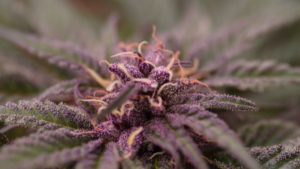Cannabis use is growing in popularity around the globe. According to a 2021 Gallup poll, 49% of Americans have tried cannabis, compared to 45% in 2017. Forbes forecasts the global marijuana industry is going to be worth $43 billion in 2025. This rise in cannabis use is partially because people believe in the plant’s medical benefits. Pew Research finds that 86% of Americans who favor legalizing cannabis claim their support is largely because of its medical applications.
However, as any medical or recreational cannabis consumer will tell you, not all cannabis plants and products are created equal. One important facet of cannabis is the variety of strains that produce unique effects.
If you are curious about cannabis but are not sure which strains to try, we’ve done the research for you. Read our guide to cannabis strains below.
 What Are Marijuana Strains?
What Are Marijuana Strains?
All cannabis strains come from a plant family called Cannabaceae. Strain varieties often fall into one of two biological classifications: sativa or indica. A strain that is a crossbreed between sativa and indica is known as a hybrid.
To develop a strain, cultivators identify specific traits they want to propagate and manipulate. This process is comparable to how dog breeders create particular characteristics in canine breeds. Experts believe there are more than 700 strains of marijuana.
Some of the most important components of a cannabis strain include the content of cannabinoids and terpenes. While some cultivators carefully curate their strain lineages and genetics, there is no third-party verification process for determining the validity of a particular strain. Additionally, each individual may have a unique experience when trying a strain of cannabis.
Guide to the Most Popular Cannabis Strains
With over 700 strains in existence, you may be wondering “What is the best cannabis strain?” While the best strain depends on your unique preferences and reactions, we’ve compiled a list of the most popular strains of marijuana. We detail each strain its classification, dominant terpene, and history.
 Blue Dream
Blue Dream
- Dominant terpene: Myrcene
- Classification: Hybrid
- History: Originating from California, this strain is a crossbreed of sativa Haze and indica Blueberry.
- Why it’s popular: It produces a balance of mental invigoration and body relaxation. The berry aroma and flavor make it a legendary strain among cannabis consumers.
 Granddaddy Purple (GDP)
Granddaddy Purple (GDP)
- Dominant terpene: Myrcene
- Classification: Indica
- History: GDP is a crossbreed of Big Bud and Purple Urkle. This lineage provides GDP with dense buds and a grape aroma.
- Why it’s popular: The purple colors make GDP one of the most visually-appealing strains. It also famously produces tranquilizing effects.
Girl Scout Cookies (GSC)
- Dominant terpene: Caryophyllene
- Classification: Hybrid
- History: GSC is a combination of OG Kush and Durban Poison. Cannabis entrepreneur and rapper Berner of “Cookies” fame made this strain a household name.
- Why it’s popular: GSC is one of the most loved dessert strains due to its sugar-cookie notes.
Northern Lights
- Dominant terpene: Myrcene
- Classification: Indica
- History: A group of cultivators known as Sensi Seeds bred this strain in Holland in the 1908s. However, it was originally distributed and found near Seattle, Washington. Northern Lights crosses Thai and Afghani strains and is the parent strain to many hybrids.
- Why it’s popular: Known for muscle relaxation and a dreamy euphoria.
Green Crack
- Dominant terpene: Myrcene
- Classification: Sativa
- History: Originates from parent strain Skunk 1.
- Why it’s popular: Green Crack induces an activating mental buzz, making it a common choice for daytime use.
Sour Diesel
- Dominant terpene: Caryophyllene
- Classification: Sativa
- History: Sour Diesel debuted in the early 1990s, with lineage from Super Skunk and Chemdog.
- Why it’s popular: Known for its gassy aroma and assisting in productivity and focus.
Pineapple Express
- Dominant terpene: Caryophyllene
- Classification: Hybrid
- History: Stems from parent strains Hawaiian and Trainwreck.
- Why it’s popular: Pineapple Express exhibits a tropical taste and aroma with a mellow buzz. The movie starring Seth Rogen and James Franco catapulted this strain into the mainstream.
Acapulco Gold
- Dominant terpene: Myrcene
- Classification: Sativa
- History: Originating from Mexico, this sativa strain is known for a stimulating and motivating high.
- Why it’s popular: Many recognize this strain from a song written by Cheech and Chong.
Jack Herer
- Dominant terpene: Terpinolene
- Classification: Sativa
- History: Sensi Seeds created this strain in the 1990s in the Netherlands.
- Why it’s popular: Its namesake comes from a well-known cannabis activist.
SFV OG
- Dominant terpene: Myrcene
- Classification: Hybrid
- History: SFV stands for San Fernando Valley. Many believe it is best to consume this strain through a flower vaporizer.
- Why it’s popular: Consumers love this strain for its body relaxation and pungent piney aroma.
ACDC
- Dominant terpene: Myrcene
- Classification: CBD-Dominant
- History: This high-CBD strain has a 20:1 CBD:THC ratio.
- Why it’s popular: Providing virtually no psychoactive effects, it is great for light relaxation.
White Widow
- Dominant terpene: Myrcene
- Classification: Hybrid
- History: Grown by Green House Seeds in the Netherlands in the 1990s, it was one of the first world-renowned strains.
- Why it’s popular: Known for being resinous and boasting thick trichomes.
Lamb’s Bread
- Dominant terpene: Myrcene
- Classification: Sativa
- History: Also known as “Lamb’s Breath,” this strain originates from Jamaica and is known to provide positive energy.
- Why it’s popular: Rumor has it that this was one of Bob Marley’s go-to strains.
Strawberry Cough
- Dominant terpene: Myrcene
- Classification: Sativa
- History: A crossbreed of the strains Strawberry Fields and Haze.
- Why it’s popular: Consumers love its delicious and fresh strawberry flavor.
 How To Identify Indica vs. Sativa vs. Hybrid Strains
How To Identify Indica vs. Sativa vs. Hybrid Strains
If you are looking to determine the biological classification of a cannabis plant, you must pay attention to physical characteristics. Cannabis sativa plants are tall with thin and light green leaves. Cannabis indica plants are short with wide and dark green leaves.
Cannabinoids: THC, CBD, and More
Along with terpenes, cannabinoids play a central role in the effects and potential medical benefits of cannabis. The most well-known cannabinoids are cannabidiol (CBD) and tetrahydrocannabinol (THC).
Here are some common effects of these cannabinoids:
- THC: Euphoria, relieves pain, stimulates appetite, promotes sleepiness, eases depression.
- CBD: Promotes calmness, relieves pain, helps with insomnia, reduces anxiety.
If you desire any of these physical or psychological effects, pay attention to the cannabinoids in your cannabis products. Legal cannabis products often have lab results that allow you to see the percentage of THC, CBD, and other minor cannabinoids.
According to scientific research, there are more than 100 cannabinoids. More studies are being done on rarer cannabinoids like cannabigerol (CBG) and cannabinol (CBN).
The Role of Terpenes in Cannabis Effects
Instead of relying solely on a particular classification to determine the effects of a strain, it is important to consider terpene profiles. Terpenes are chemical compounds that produce aromas and flavors that promote certain effects. Aside from being present in cannabis plants, you can also find terpenes in a wide variety of herbs. Terpenes are the primary components of essential oils that are often used for aromatherapies.
Relaxing and stress-relieving terpenes include myrcene and pinene. On the other hand, terpenes like limonene and terpinolene may produce energizing and uplifting effects. If you desire particular effects from strains, inquire about the terpene profiles. Chances are this will give you more accurate results than simply relying on whether a plant is classified as sativa or indica.
Learn More About Cannabis Strains
Curious about cannabis science, cannabinoids, and terpenes? Read more on the Botanical Empress blog.





No Comments